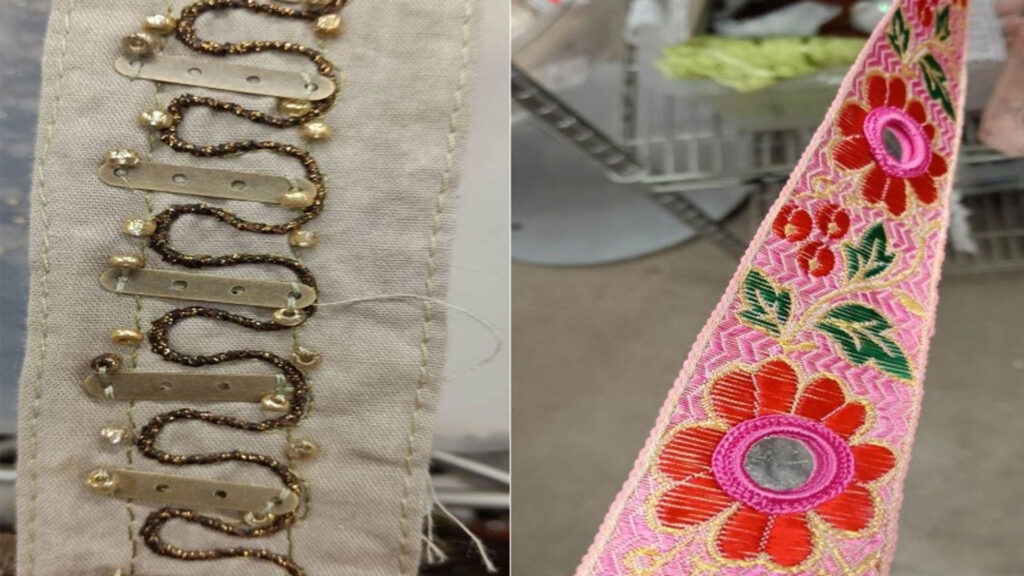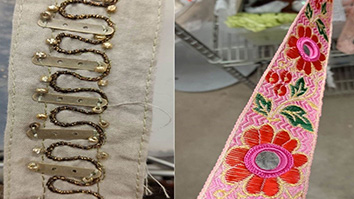
Turning piezoelectric materials and lithium-ion batteries into thread, innovators will weave fabrics that record sound.
Piezoelectric materials are a marvel. Twist them, squeeze them, bend them, stretch them, and they produce electricity. The last time you started your gas grill with a push-button spark, you likely did so thanks to piezoelectricity.
Under a contract from the Intelligence Advanced Research Projects Activity (IARPA), an expert team led by SRI research engineers Marcus Bagnell and Nicole Heidel, specialists in fiber technologies and collaborators at North Carolina State University and International Fabric Machines (IFM), a textile maker, will seek to incorporate a piezoelectric material into a fabric that acts like a microphone — a textile that can record audio. The key component will be piezoelectric threads woven into the fabric, which were demonstrated in Nature last year. The team will work to seamlessly integrate the sensor, along with its support electronics into a textile that closely resembles the ones used in off the shelf clothing.
“When sound waves strike the fabric, it stretches the piezoelectric threads, producing an electric signal like the diaphragm of a microphone,” says Bagnell, who is principal investigator. “The fabric is essentially a drum. The sound waves bend the piezoelectric threads, creating an electronic waveform that can be recorded and played back.”
Pulling on the thread
The project is known as “Smart Electrically Powered and Networked Textile Systems” — SMART ePANTS, for short. Eventually, the team hopes to fashion a whole garment — a shirt, pair of pants, socks, underwear even — that records sound. IARPA refers to these garments as primary clothing.
“We can draw piezoelectric materials into long, thin strands — we call it yarn — that can be woven into textiles,” Heidel explains.
“By shaping the microphone, battery, and other components into thread-like structures, we’re aiming to get functionality woven into the material of the fabric itself, rather than sewn on into buttons or snaps,” Bagnell promises.
As impressive as piezoelectric thread sounds, the microphone is but one component of the SMART ePANTS system. The team also must develop and integrate similar thread-like technologies to power the system, store data, turn the system on and off, and notify the user that the system is engaged. That means similar thread-like lithium-ion batteries too. The garment will also have integrated memory, controls, and haptic notification systems, but those will have other, non-thread-like forms — and, of course, all the necessary wires and interconnects to pull it all together into a fabric that looks and feels natural.
A tall order
The most formidable task is to weave it all into a working prototype, which is the goal of the first phase of the SMART ePANTS engagement.
Making the challenge even greater, IARPA envisions multiuse garments. The resulting fabric must therefore be scrunchable, foldable, and washable for repeated use.
In that regard, SRI and its collaborators have already demonstrated prototypes of several of the components. International Fabric Machines has know-how in fabricating complex microphones and drawing them into threads. NC State has expertise in developing active smart textiles for medical and athletic use. NC State also has garment design and construction capabilities that will seamlessly and unobtrusively integrate the necessary components. The team also includes Kenneth D. King, a fashion designer in New York who will help with garment inspiration. SRI brings the big-picture mindset and the operational skills to develop a complete technology.
To this complex mix, SRI adds one more key ingredient, Bagnell says: SRI’s Speech Technology and Research (STAR) Laboratory, which is a multidisciplinary group of engineers, computer scientists, and linguists who are experts in signal processing; data indexing and mining; and computer-aided learning.
“The folks from SRI’s STAR Labs can help us really optimize the data processing, storage, and power use to make the system as efficient as possible while still getting the audio quality we need,” Bagnell says. “I’m very excited with how the team came together. Between IFM’s component integration capabilities, NC State’s smart textile expertise, and Mr. King’s garment design experience, I think we should be able to put together a highly capable system into a garment that will be comfortable to wear.”



